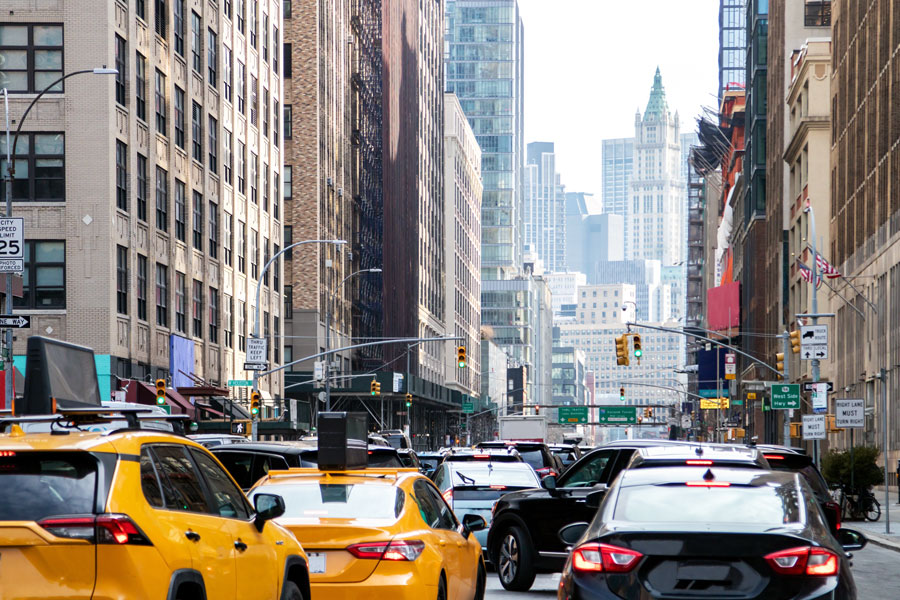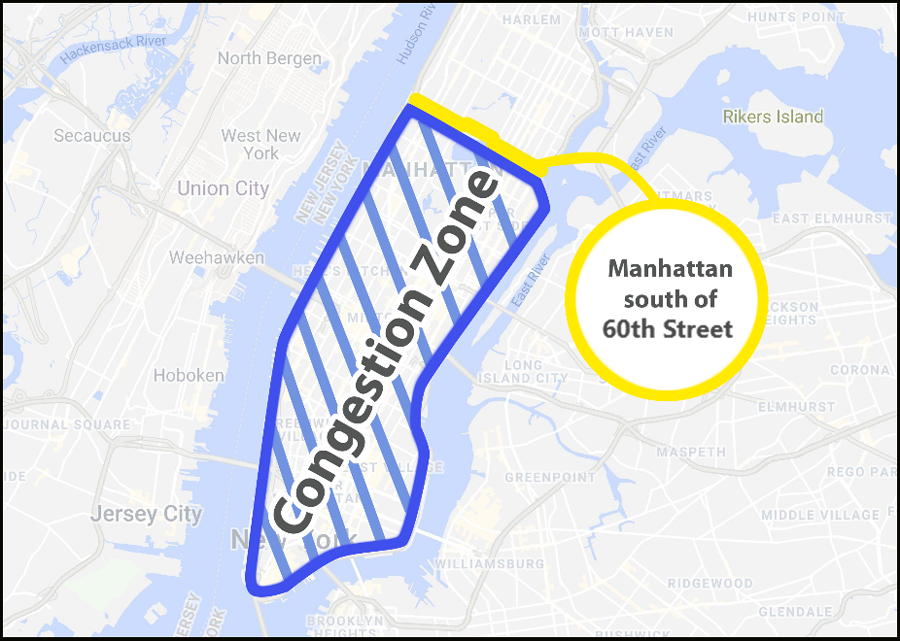
MANHATTAN, NY – New York City’s congestion pricing is a program aimed at reducing traffic congestion and improving air quality in Manhattan, while generating funding for public transportation improvements. It involves charging vehicles entering certain parts of Manhattan during peak hours. NYC’s congestion pricing plan is the first of its kind in the United States, following similar programs implemented in cities like London, Stockholm, and Singapore.

Key Details of NYC’s Congestion Pricing:
- Geographic Coverage:
- The pricing zone covers Manhattan below 60th Street, excluding the West Side Highway (Route 9A) and the FDR Drive.
- Vehicles entering or remaining within this zone during specified times would be subject to tolls.
- Pricing Structure:
- The exact toll amounts are expected to range from $9 to $23 per trip, depending on the type of vehicle, time of day, and other factors.
- Discounts and exemptions are being considered for certain groups, such as residents in the zone, people with disabilities, and emergency vehicles.
- Goals of the Program:
- Reduce Congestion: Discourage unnecessary vehicle trips and promote alternative transportation methods.
- Environmental Benefits: Decrease vehicle emissions and improve air quality in the city.
- Fund Public Transit: The program is expected to generate billions of dollars annually, which will be used to upgrade and maintain New York City’s public transportation system, particularly the Metropolitan Transportation Authority (MTA).
- Implementation Timeline:
- Congestion pricing in NYC has been discussed for years and was approved by the state legislature in 2019. However, implementation was delayed due to political debates and the need for a federal environmental review.
- New York City’s congestion pricing began on January 5, 2025.
- Technology Used:
- The system will use electronic tolling infrastructure, similar to E-ZPass. Cameras and sensors will detect license plates and charge vehicles automatically.
- Concerns and Criticisms:
- Economic Impact: Critics argue that congestion pricing could disproportionately affect low-income individuals and small businesses that rely on vehicles for their livelihoods.
- Equity Issues: Some believe the policy might not adequately address the needs of those with limited access to public transit.
- Traffic Diversion: There are concerns about increased traffic in areas bordering the congestion zone, such as the Bronx or Queens.
- Potential Benefits:
- Faster and more reliable transit times for public buses and emergency vehicles within the zone.
- Health improvements due to reduced air pollution.
- Significant revenue to modernize NYC’s aging subway system, benefiting millions of daily commuters.
Long Island Businesses Expressing Concerns:
According to Fox 5 New York, Long Island businesses are already expressing concerns over the financial impact of New York City’s congestion pricing.
Impact on Contractors:
Ben Jackson, president of Ben’s General Contracting, highlights the challenges his company faces due to the additional expenses. Many of his projects are in Manhattan, and passing the congestion toll costs onto clients could drive them to competitors. Jackson notes that the $13.50 daily toll accumulates significantly when considering the increased costs for supplies and subcontractors who also need to enter the zone. For contractors, mass transit isn’t a viable alternative, as their work requires transporting tools, ladders, and scaffolds by truck.
Impact on Other Businesses:
Robert Schaefer, president of Divine Brine Foods, shares similar concerns. His business distributes approximately 2,000 pounds of pickles weekly to city markets, restaurants, and stores, necessitating multiple trips into Manhattan each week. Schaefer fears that the initial toll rates may increase over time, further straining his business’s finances.
As the program continues, businesses that rely on vehicular access to Manhattan are closely monitoring its financial implications and exploring strategies to mitigate the added costs.


